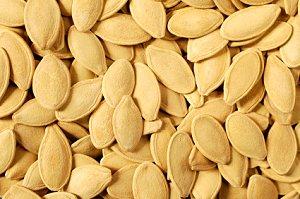
Planting pumpkin seeds is a quick and easy way to jumpstart a lush garden, but gardeners should be careful to plant seeds appropriately for the healthiest plants with the highest yield.
Types of Pumpkins
Pumpkins come in an amazing variety of sizes, ranging from just a few ounces to behemoths that weigh more than 500 pounds. Colors can also range from a pale cream or white to pink or red hues, including every conceivable shade of orange. Classic Jack-o-lantern pumpkins, however, are Connecticut field pumpkins that generally weigh in between 10 and 20 pounds and are a bright, solid orange color. Planting seeds to grow your own pumpkins, whether you want to experiment with unusual varieties or just want a good crop of carving pumpkins, is easy and enjoyable for both novice and experienced gardeners.
Where to Buy Seeds
The best way to find pumpkin seeds to plant is to save them from the previous year's Jack-o-lanterns. Seeds should be air dried for several days and stored in a cool, dark, dry place until spring. Keep in mind, if you save seeds from a hybrid variety of pumpkin, you may not get plants that produce the same kind of fruit that you saved your seeds from.
Seeds of different varieties can often be purchased at nurseries or gardening centers, and the following online retailers also offer a range of pumpkin seeds for sale:
Tips for Planting Pumpkin Seeds
For the best crop, seeds must be properly cared for from the moment they are chosen until they sprout vigorous seedlings.
Choosing and Preparing Seeds
When choosing pumpkin seeds, select seeds that have been air dried rather than dried in an oven which could remove too much moisture. Seeds should be firm and evenly colored without blotches or discolored patches that could indicate diseases.
Before planting, soak seeds for up to 24 hours in warm water to promote faster seed germination. Another method to help seeds sprout more quickly is to carefully file the thick lengthwise edges of the seed so the new shoot can break the shell more easily.
When to Plant
Pumpkins require between 100 and 140 days of growth before the vegetables will be ripe. In moderate climates, pumpkin seeds can be planted outdoors after the worst of the spring rains have passed and when daily temperatures consistently reach into the low 70s. In cooler climates with shorter growing seasons, pumpkin seeds can be started indoors in peat pots and transplanted outside once temperatures are acceptable.
Where to Plant
Pumpkins are vigorously growing vines that require at least six hours of sunlight per day. Plant seeds in a sunny spot with plenty of room to spread out - a single pumpkin vine can stretch as far as 30 feet. The soil should have a pH between 5.5 and 6.5 for the best growth, and nutrient fertilizers with moderate amounts of potassium and phosphorus, as well as high amounts of nitrogen, can be used to prepare the soil and nourish the plants.
How to Plant
When planting pumpkin seeds, the seeds can be arranged in either hills or rows depending on the available garden space and the number of seeds being planted.For hill planting:
- Create a mound of soil three feet in diameter with a shallow trench around it for collecting water.
- Plant four to five seeds on each hill, spaced six to eight inches apart.
- If planting multiple hills, each hill should be at least ten feet apart to give plants sufficient space.
For row planting:
- Create an elevated row of dirt with small trenches on either side to collect water.
- Plant two or three seeds every 18 inches along the row.
- If planting multiple rows, each row should be at least six inches away from its neighbors.
Tips for all pumpkin seeds:
- Plant seeds one to one and a half inches deep in loosely packed soil.
- Seed orientation makes no difference to either germination or growth.
- Soil should be kept consistently moist. Pumpkins are 80 to 90 percent water depending on the variety, and adequate moisture is essential for healthy, productive plants.
- Larger pumpkin varieties will need greater space between rows or hills.

Seedling Care
Once the pumpkin seeds sprout - usually in one or two weeks - great care should be taken with the seedlings to ensure healthy, vigorous plants that will yield a good crop of pumpkins.
- Water young plants regularly but only at the base of the plant; avoid watering the foliage to minimize mildew.
- Prune plants and thin hills or rows once permanent leaves are established to give each plant adequate room to grow.
- Add compost or other fertilizers if desired.
In Conclusion
Planting pumpkin seeds can be a fun project even for inexperienced gardeners, with the added bonus of creating an autumn pumpkin patch and harvesting your own Jack-o-lanterns. With proper preparation and care, a simple seed can turn into a bumper crop just in time for Halloween.







